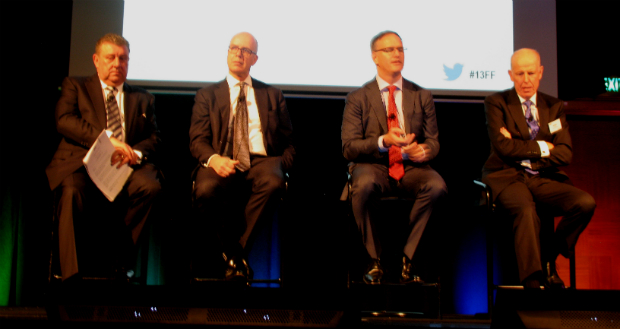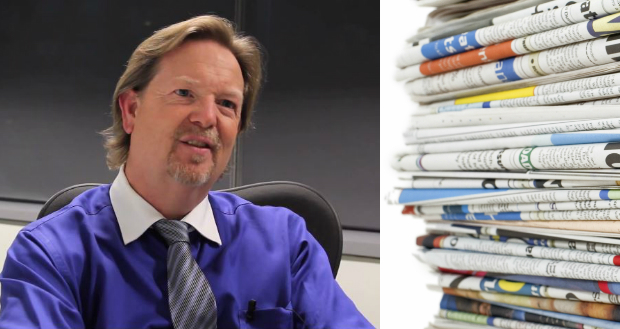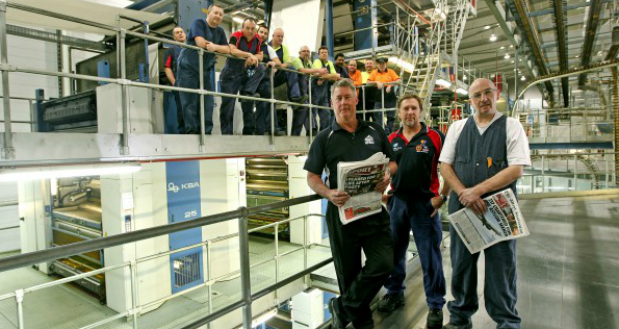
While the news media industry is both enchanted and exasperated by new digital platforms, the chief executives of four of Australia’s newspaper giants – WAN, Fairfax, News and APN – say print is holding its ground. The four CEOs shared a platform at the opening of the annual Panpa newspaper publishers conference and issued a message of defiance for the printed newspaper, saying its arguments for its decline had been seriously overcooked. Chris Wharton, CEO of West Australian Newspapers, declares that his group of papers aren’t giving up without a fight. Wharton says, “Our newspaper advertising market is still fairly robust compared to many other areas. This hasn’t happened by accident, we’ve invested a lot of time and energy into keeping our advertisers happy, and that’s why I talk about the importance of relationships. We are an extremely strong local brand, and our advertisers keep telling us that ads in our products are working for them. We’ve also bucked the trend by bringing out new print products in the past year, including a high-quality glossy magazine called West Business Insider, which has been very successful and extremely profitable. That’s not to say we’re not aggressively developing the digital side of the business too. Our strategy hits every part of our organisation.” The media chiefs say falling advertising revenue is newspapers’ Achilles heel, declining at twice the rate of readership numbers.
Wharton says, “The media buyers in Sydney and Melbourne are down on newspapers, there’s no doubt about that, they’re young, we have to do more to get our story out in a better way. But the thing I say is that the west works. Our customers measure things by how their till rings, and we don’t seem to have the problem getting through to the media buyers locally, but we can still write pretty healthy revenue out of Sydney and Melbourne, around $100m.” Heartened by the results of the recently launched Enhanced Media Metrics Australia (EMMA) survey, Michael Miller, CEO of APN News & Media, says, “I think that we don”t have an audience issue. Three-quarters of Australians will read a newspaper every week. We have a revenue problem. Our revenues are decreasing at a faster rate than our audiences. It’s about what we can do individually and together [to create] a better commercial proposition.” There is no doubt that the media industry is changing, with audiences segmenting themselves across the four different platforms of print, web, mobile and tablet, but the CEOs say newspapers still form a valuable part of their companies’ offerings. Julian Clarke, new CEO of News Corp Australia, says, “I think the market is working out who are going to be newspaper readers, and who are going to be digital readers. There’s a big overlap. The digital world is very strong in the Monday to Friday, but by gosh, weekend newspapers are as strong as ever. As a media proposition, if you put the Sunday newspapers together that we publish, in less than 24 hours you’re amassing an audience that television are taking a week to reach. This is very powerful. “This legacy business that’s become so criticised is paying all the bills. And it ain’t dead. You talk to any journalist and ask them to rate clout-wise, they’ll always put the newspaper at the top.” Australia’s biggest newspapers are now defining themselves as neither print nor digital, but print-plus organisations, still figuring out how to fill the advertising holes in the print world and keep the printed word, while it’s still relevant and bringing in audiences, very much alive. The two day sold out Panpa conference features a multitude of national and overseas speakers working to find a pathway forward for newspapers in the multi-platform world.
Comment below to have your say on this story.
If you have a news story or tip-off, get in touch at editorial@sprinter.com.au.
Sign up to the Sprinter newsletter




